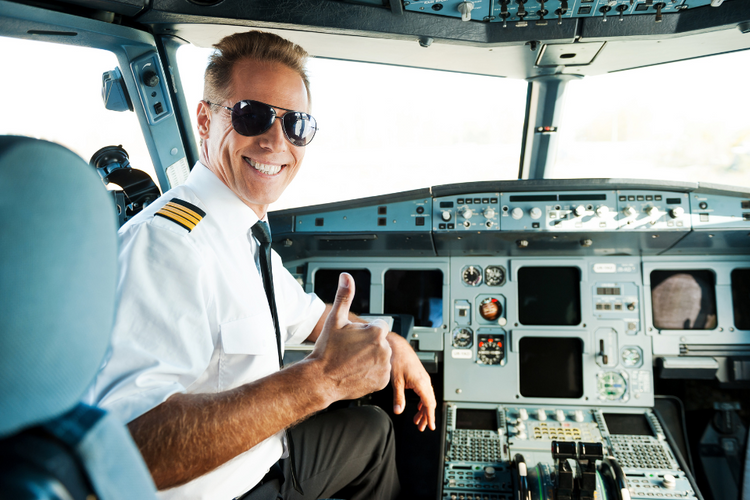Posted by Erika T. on Aug 18th 2022
People pick up strange ideas from movies, TV, or urban legends about what it takes to become a pilot. Here are five common myths about being a pilot, explained for those who have absorbed misinformation.
All Pilots Must Have Perfect Vision
According to the FAA’s guide for aviation medical examiners, the agency requires that first-class air transport and second-class commercial pilots have 20/20 distance vision in each eye with or without correction. Third-class private pilots must demonstrate 20/40 distance vision, again, with or without correction.
Near vision must be 20/40 in each eye, with or without correction, and air transport or commercial pilots 50 or older must show 20/40 intermediate vision at a distance of 32 inches with or without correction. There is no such intermediate requirement for third-class private pilots.
Every Pilot Is a Military Veteran
There was a time, decades ago, when many commercial pilots were military aviation veterans. That’s simply not true anymore. Back in the ‘80s, about two-thirds of airline pilots were military vets. By 2019, according to Bloomberg News, only 30 percent had military backgrounds. Most pilots now receive training at an FAA-approved private flight school.
Autopilot Flies the Plane
This is one of the most irritating myths about being a pilot that pilots must debunk. Living, breathing pilots enter information into autopilot devices; this means the autopilot is only as good as the information a pilot puts into it.
Autopilot enables pilots to work on additional necessary tasks, but it would be impossible to rely on it for an entire flight. Pilots who are too reliant on automatic controls endanger their aircraft, themselves, and any passengers or cargo they’re carrying.
A pilot must always be ready to disable or reprogram the autopilot to respond to air traffic control course or altitude changes, weather, or terrain below.
Pilots Don’t Feel Jet Lag
Earning a pilot’s license doesn’t magically quell your circadian rhythms. Pilots are just as prone to jet lag as non-pilots. That’s why there are regulations about how many consecutive hours a pilot can fly and how many hours of rest they’re required to have between flights. These requirements differ if there is more than one pilot aboard the aircraft and from one country to the next. “Flight duty periods” (FDPs) are determined to comply with regulations on individual flights as well as the maximum permissible duty hours within a seven-day period.
Pilots Make a Lot of Money
It’s true that pilots with decades of experience may earn six figures, but beginning pilots may be hard-pressed to make their flight school student loan payments. While the median pay for commercial airline pilots seems high at over $100,000 in 2021, remember that the median represents the midpoint of a broad spectrum of pay grades. Some junior pilots for smaller, regional airlines barely make $30,000 a year. Devotion pays off, but starting pilots do it more for the love of flying than the money.
If you’ve earned, or are considering earning, your pilot’s license, visit our pilot supply store for test preparation materials, headsets, sunglasses, GPS systems, charts, and more.

